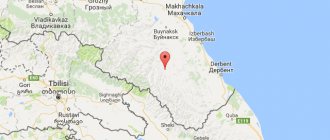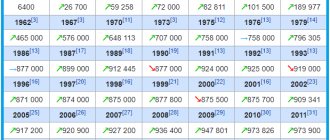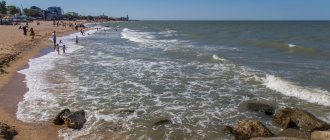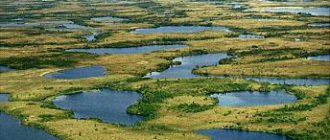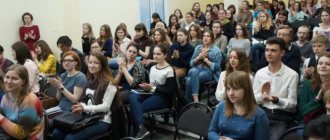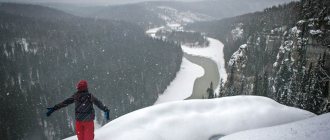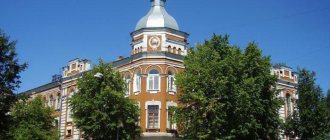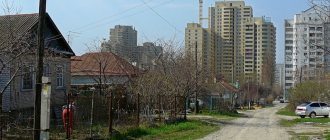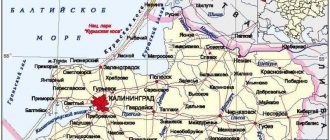The Republic of Dagestan has officially existed since 1921. In this regard, it is very young, although some of its cities are very ancient. This is a real country of mountains, where most of the territory is located at high altitudes. Despite this, the cities of Dagestan can hardly be called high-mountainous, because most of them are located closer to the Caspian Sea, and the most significant ones are located on a narrow strip along the coast.
What holiday is it today?
February 10, 2022, Thursday
Today are holidays, events: Diplomat's Day Tomorrow: World Sick Day Discovery of insulin
Today is the Orthodox holiday: St. Ephraim the Syrian. Venerable Ephraim of Novotorzhsky. Venerable Ephraim of Pechersk, Bishop of Pereyaslavl. Venerable Theodosius of Totem, Spasosumorin of the monastery, leader and founder... Tomorrow: Transfer of the relics of the holy martyr Ignatius the God-Bearer. Saints Gerasim, Pitirim, Jonah, bishops of Great Perm, Ustva...
Today is a national holiday: Ephraim's Day... Tomorrow: Lawrence's Day
Urban settlements
- Leninkent
Population 16,771 (2020).
- Semender
Population 14,678 (2020).
- Tarki
Population 15,850 (2020).
- Alburikent
Population 12,800 (2020).
- Shamkhal
Population 12,199 (2020).
- Beliji
Population 10,903 (2020).
- Mammadkala
Population 10,860 (2020).
- New Kyakhulai
Population 10,376 (2020).
- Sulak
Population 8,638 (2020).
- Kyakhulai
Population 7,447 (2020).
- Tube
Population 7,215 (2020).
- Manas
Population 6,214 (2020).
- Dubki
Population 5,409 (2020).
- Bavtugay
Population 4,991 (2020).
- Shamilkala
Population 4,866 people (2020).
- New Sulak
Population 3,674 (2020).
- Komsomol
Population 2,594 (2020).
- Achi-Su
Population 1,841 (2020).
Seasons
Seasons, four periods of the year (spring, summer, autumn and winter) characterized by certain average temperatures. The period during which the Sun passes through one of these sectors is called the season. Spring in the Northern Hemisphere and autumn in the Southern Hemisphere begin when the Sun passes through the initial circle of declination and its right ascension is 0° (vernal equinox). Summer in the Northern Hemisphere and winter in the Southern Hemisphere occur when the sun's right ascension is 90° (summer solstice). Autumn in the Northern Hemisphere and spring in the Southern Hemisphere begin when the sun's right ascension is 180° (autumnal equinox). The beginning of winter in the Northern Hemisphere and summer in the Southern Hemisphere is considered to be the winter solstice, when the direct ascension of the Sun is 270°... Next: Seasons. Russian folk calendar. Monthly words...
Content
- 1 Largest cities 500 thousand - 1 million people 1.1 Makhachkala
- 2.1 Khasavyurt
- 3.1 Buynaksk
- 4.1 Yuzhno-Sukhokumsk
Folk calendar about every day
Every day one season always replaces another and this determines a person’s way of life. In connection with this, a folk calendar was formed in which there were practically no nameless, unmarked days. Every day was special, had its own purpose. All this was determined by climate conditions and astrological phenomena.
A calendar is a system for counting periods of time. The first calendars arose a long time ago, in ancient times, because there was a need to measure time. The word calendar comes from the Latin words caleo - to proclaim and calendarium - debt book. This is due to the fact that in Ancient Rome the beginning of each month was especially proclaimed, and because it was customary to pay debts on the first day of the month. Different peoples counted time differently. Some calendars are based on the changing phases of the moon - lunar calendars; in others - the change of seasons - sunny; in others, the length of the year was coordinated with the change of seasons, and the counting of months was associated with the phases of the Moon. Such calendars are called lunisolar.
In Rus', the calendar was called a monthly calendar. Every day, the month book covered the entire year of peasant life, “describing” day by day, month after month, where each day had its own holidays or weekdays, customs and superstitions, traditions and rituals, natural signs and phenomena. The cyclical nature of the calendar is reminiscent of human life, where spring is youth, summer is heyday, autumn is the time of harvesting fruits (it’s good if there are some, otherwise you can live your life without collecting fruits), winter is the time of wisdom and peace. This cyclicality and rhythm determined the way of life of the farmer. The folk calendar was an agricultural calendar, which was reflected in the names of the months, folk signs, rituals and customs. Even the determination of the timing and duration of the seasons is associated with real climatic conditions. Hence the discrepancy between the names of the months in different areas... Next: Folk calendar...
List of cities in Dagestan - brief information
Each of the major Dagestan cities has its own interesting history. Not all of them have at least a hundred years of city status, but the population of any of them contributed to the history and prosperity of the republic. It's worth getting to know them better.
- Makhachkala is the capital, political and economic center.
The largest city in the Republic of Dagestan, it is home to about 588,000 people. Once upon a time there was Tarki-aul on this place, which served as a trading hub where caravans heading to Derbent stopped. The future city was founded in 1844 as the Petrovskoye fortress, and a little later this village was renamed Petrovsk.
Rapid development began at the end of the 19th century with the construction of the railway from Rostov to Baku. In 1914, there were already several large industrial enterprises here, including an oil refinery. The city's population grew and its infrastructure became more and more developed. But real prosperity began only under Soviet rule.
In 1921, Petrovsk received a new name - Makhachkala, in honor of Makhach Dakhadayev, a local revolutionary. Since the 30s, rapid development of both industry and the social sphere began here. A real water supply system appeared, streets and new neighborhoods were built up, hospitals and schools were built, and even defense enterprises appeared.
With the beginning of perestroika, the economy of Dagestan began to decline, many enterprises were closed, and jobs were reduced. At the turn of the 20th and 21st centuries, radicals of extremist movements of Islam began to penetrate here; the capital of the republic had a very difficult time during these years. However, with the arrival of the new city government, improvement began again. Moreover, at the beginning of the 21st century, Makhachkala was recognized as one of the most comfortable Russian cities. The Dagestan capital is considered one of the important scientific and economic centers of the North Caucasus.
- Derbent is the ancient and southernmost city of Russia.
It is one of the most ancient cities in the world. It has been known since the 3rd century BC, as many ancient sources mention it. Initially, Derbent was one of the fortresses that belonged to Persia and was considered a major military center. In the 18th century, Peter the Great came here.
Many studies have been written about the history of Derbent; it is so rich and diverse that it can be told for a long time. The city was under the rule of the Seljuks, Tamerlane himself, and the Safavid dynasty. And in 1813 it finally became part of the Russian Empire.
Derbent is one of the cities in the southern territorial district of Dagestan. Today its population reaches more than 120 thousand people. People of various nationalities live here. There are food industry enterprises and as many as 4 theaters. On September 19, 2015, the city officially celebrated its 2000th anniversary. Such a respectable age does not make it old - the city still looks young and is developing.
- Khasavyurt is the patrimony of the Kumyk prince Khasav.
Until 1847, this settlement was called Yaryksuw (after the name of the local river Yaryksu). The aul was on the path of the khan's raids and was destroyed several times. Having arrived in the Caucasus, the Russians built a fortress here, and the population was actively engaged in agriculture. The agricultural sector is still developed in Khasavyurt today, but many food industry enterprises are closed. The population is 138 thousand people. The city gained new fame in 1996, when the famous Khasavyurt agreements were signed here.
- Dagestan Lights.
This unusual name was given to the city by gas flares - gas emissions from underground as a result of an earthquake. This happened in 1904, and a few years later small private enterprises began to appear in these places. Gradually a settlement arose; the official date is considered to be 1914. The village was granted city status only in 1991.
Thus, Dagestan Lights is the youngest city in the Republic of Dagestan; it is still a satellite of Derbent. It is interesting that during the Great Patriotic War the local glass factory produced Molotov cocktails as a product. This same enterprise today is the largest and most famous in the city. The population of Dagestan Ogni is about 30 thousand people.
- Buynaksk
Another one of the oldest Dagestan cities, founded as an aul at the end of the 14th century. In 1832, the Russian fortress Temir-Khan-Shura arose here. During the Civil War, this settlement was the capital of the Mountain Republic.
The city received its modern name in honor of the revolutionary Ullubiy Buynaksky. About 64,000 residents live here; like other cities in Dagestan, it is international.
- Kizlyar is a famous center of gunsmiths.
It is believed that Kizlyar was founded in 1735, but long before this date there was an ancient settlement here, one of the Arab fortresses. The starting point for the city was given by General-in-Chief V. Ya. Levashov, who built a Russian fortification here. At the turn of the 18th-19th centuries, Kizlyar was a very famous shopping center.
Currently, the agricultural industry is developed here, with several wine and cognac enterprises operating. Initially, the population was predominantly Russian, but today the majority here are representatives of Dagestan nationalities. Number of people: 48,000 people.
World-famous Kizlyar knives brought glory to the city. There are large arms factories in the city. Among them are LLC PP Kizlyar, Poisk, Berkut, etc. A huge selection of products from Kizlyar craftsmen is presented in the catalog of the KavkazSuvenir store.
- Izberbash.
This is a young city, founded in 1932, in which the oil industry is mainly developed. It received its status in 1949. It was the oil workers who rebuilt Izberbash and can be proud that in 2005 it was recognized as the most comfortable Russian city.
- Kizilyurt.
Another of the cities of the republic that arose in the 19th century. There was a fortification of local residents here, on the basis of which a settlement subsequently arose. Currently, about 36 thousand people live here, and the city thrives due to many enterprises in the construction sector, as well as tourism.
- Yuzhno-Sukhumsk.
This small town has a population of just over 10 thousand, and it received city status in 1988 (before that it was considered a village). The main direction of the economy is oil production. The favorable location of the city between Kizlyar and Stavropol allows the trade sector to develop.
- Kaspiysk is the base of the Anzhi football club.
It is located next to Makhachkala and is its satellite city; the only airport in the Republic of Dagestan is located here. Until 1947, it was the village of Dvigatelstroy, which already speaks of the direction of industry that developed here. In 2015, by order of the Government of the Russian Federation, it was included in the list of single-industry towns with the most difficult socio-economic situation. The population of Kaspiysk is more than 110,000 people.
Fishing calendar for every day
The fishing calendar should not be taken as an absolutely indisputable truth. Fish biting is greatly influenced by a whole range of natural factors, as well as the influence on the nature of man himself. You must not forget that the fish’s bite depends and is determined not only by the calendar dates and biological cycles of their life, reflected in the calendar, but also, no less, by the state of their habitat; the bite also depends on weather conditions: air and water temperatures, cloudiness, wind direction and strength, etc... Next: Fishing calendar...
Route No. 2: Mountain Dagestan - Gunib, Chokh and Gamsutl
On this day, it is better to wake up early - the route ahead is long. But on the way to the main tourist sites, you will find a dizzyingly beautiful road, a lot of photo stops and interesting places that are worth seeing.
Panoramas on the road to Gunib
© Julia Alisova
In the village of Gimri, pay attention to the Gimry Tower . The tower is reconstructed from the era of the Caucasian wars. The leaders of the mountaineers, imams Shamil and Ghazi-Muhammad, hid here from the tsarist troops.
You can visit the tower for free; if you go up, the observation deck offers an excellent view of the surrounding area.
Along the route you will find Saltinsky Waterfall , one of the main attractions of Dagestan. The fact is that this waterfall is unique, underground. Its water flows break through the rapids of the rocks, falling into a gloomy underground cave - a fantastic sight.
In winter, its streams freeze, turning into an icefall, and in summer, the reflections of sunbeams play on the walls. There is a dirt road leading to the village of Salta, then only on foot. During the warm season, summer cafes open along the way to the waterfall; this is one of the tourist signatures of Dagestan.
From the Saltinsky waterfall to the village of Chokh , our next stop, is about an hour's journey. Perhaps a little more - the views along the way are very picturesque!
On the way, you will pass the Gunibskaya hydroelectric station - it is not as huge and picturesque as Chirkeyskaya, but it also looks very photogenic. Pay attention to the tunnel in the mountains; in front of it there is a parking lot and a small observation deck with views of the mountains and the reservoir.
Aul Chokh
© Natalia Semchina
The village of Chokh is one of the oldest in Dagestan. Many ancient buildings have been preserved here, with a special local development - designing terraces.
The mountain on which the village is located seems to be covered with houses - very different, from picturesque ruins to beautiful stone guest houses.
If you wish, you can stay here for the night; the surroundings of Chokha are very picturesque and interesting for walks. Please note: during the season there are usually a lot of tourists here. It is better to book accommodation in advance.
A postcard view of the village opens from the observation deck near the monument to the fighter Ali Aliyev. The panorama shows Chokh against the backdrop of majestic mountains.
A few kilometers from Chokh is the famous ghost village Gamsutl . Truly mountainous and inaccessible (the last kilometers of the path can only be covered on foot), Gamsutl, thanks to its rare beauty and aura of abandonment, has become one of the most popular tourist attraction points in Dagestan.
The road to Gamsutl snakes through a dense forest. The car will have to be left at the foot of the mountain, on the river bank, and the only way forward is on foot. Ruins of houses that have preserved traces of their former beauty, abandoned streets, paths over the abyss - these days it is difficult to imagine that just a few decades ago people lived in Gamsutla.
Village of Gamsutl
© Natalia Semchina
Please note: a little before reaching the ruins of the settlement there is a rock, it is worth climbing up a narrow path (be careful) to photograph the village from that very postcard view.
Be sure to leave at least a couple of hours to visit Gamsutl. Take a walk through the quiet streets, look at the facades of houses, platbands, and porches.
300 meters before the village you will find a spring where you can refresh yourself and replenish your supply of fresh cool water.
It takes about an hour to get to the next point on the route, the village of Gunib. The road winds between valleys, majestic cliffs and apricot groves. There are many attractions in the village and its surroundings, both natural and man-made.
The Gunib fortress is interesting; it is also called the Shamil fortress, in honor of the famous freedom fighter of Dagestan. There is an observation deck nearby with excellent views of the village and surrounding mountains.
If you have any strength left, also go up to the observation deck on Mount Mayak . This is the highest accessible point in the vicinity of Gunib, its height is 2352 meters above sea level. Also known in Gunib is Tsarskaya Polyana , a historical place where Emperor Alexander I had breakfast with his officers.
If you wish, you can stay overnight in Gunib; there are both hotels and rooms in guest houses to choose from.
Orthodox calendar about every day
Orthodox calendar: Orthodox, Church and Christian holidays.
The church year is an alternation of weekdays and holidays. On weekdays, a person is called to work “by the sweat of his brow to earn his bread.” Holidays are given in order to feel liberation, to rise above the bustle and routine of the world, to feel involved in the highest of worlds, “where there are no illnesses, sorrows and sighs, but endless life.” Since ancient times, holiday cycles have been associated with the seasons. The pagans associated them with the worship of the forces of nature, the cult of which in the Old Testament was replaced by gratitude to the Creator for the universe. And although the connection between holidays and the seasons has not completely lost its power, since God is present in everything, in the plant and animal world, in human works, it nevertheless faded into the background, giving way to a spiritual foundation built on the Sacred Scriptures. The history of Orthodox holidays dates back to the times of the Old Testament. Each of the Orthodox holidays is dedicated to the remembrance of the most important events in the life of Jesus Christ and the Mother of God, as well as the memory of saints... Next: Orthodox calendar...
Izberbash
This city is also young, founded in 1932, although the archives contain information about the existence of an earlier settlement of Ulu-Izbar on this site. It is mentioned in the camp journal of Emperor Peter I, dated 1722.
Izberbash appeared thanks to the development of the oil industry here. Oil production takes place on the shelf of the Caspian Sea, the city itself is located on the coast 65 kilometers from the capital of the republic. It was built by oil workers and is recognized as the most comfortable in the country. In addition to oil production enterprises, there is a radio plant, a clothing factory, two confectionery factories, a city dairy factory, and a bakery. Nectars and juices are produced, and there is also wine and cognac. Notable is Mount Pushkin-Tau, whose outline resembles the profile of a famous classic.
Russian folk calendar for every day
The word “sign” comes from the word “notice”, i.e. observe. As a result of observing what happens around a person every day, he accumulates life experience. This knowledge was passed down from generation to generation, carefully preserved and people trusted it as a sacred book. Many signs have come to us from the depths of centuries without losing their knowledge. Each of us is free to choose: to dismiss all this as an absurd superstition or to take a closer look at the signs and take the centuries-old experience of generations more seriously. Most of us, when taking exams, ask them to scold them, boasting about some kind of good fortune or luck, spit so as not to jinx them or knock on wood, take a detour if a black cat crossed the road, are afraid of the number 13 and much more. And who among us does not have lucky things, numbers? Who has never resorted to the help of fate at least once in their life, who has not believed in secrets? It’s as if everything connected with signs is hidden somewhere deep in our subconscious. Often we remember them mechanically, unconsciously, or just as a joke. But, undoubtedly, the signs contain a lot of accurate knowledge and practical wisdom of our ancestors. They cover all the characteristic, often difficult to perceive, natural phenomena. Signs have preserved a lot of what was in old folk holidays and customs; they help predict the weather, grow crops... Next: Folk signs...
Vacation with children
A family vacation in Dagestan is an excellent choice. You can come here all year round, but the summer months are the most popular - the holiday season in the republic lasts from May to October.
At this time, you are almost certainly guaranteed comfortable sunny weather - even in August the thermometer rarely shows above +30...32 °C. The water temperature is even more pleasing; in July and August the sea warms up to the point of “fresh milk” - 26...28 °C.
The largest amount of entertainment for young travelers can be found in the capital of the republic. Makhachkala is a large city with a million population; there are a huge number of parks, squares, and children's entertainment centers.
Ak-Gel Park
© WelcomeDagestan
In Makhachkala, the Ak-Gel park , located on the shore of the lake of the same name, is especially popular.
There is a monument to a Russian teacher, and nearby there is a lot of entertainment, pleasant street cafes, walking paths, attractions and a Ferris Wheel.
Be sure to take a walk along the city embankment - the beautiful Rhodope Boulevard . This is one of the oldest park areas of the Dagestan capital. There is a lot of entertainment for kids here - swings, play areas, attractions, street concerts.
A stone's throw from the Rhodope Boulevard is the entrance to the city beach of Makhachkala - you can combine a walking holiday with a sea holiday. The park is especially beautiful in the evening, when the monuments and fountains are illuminated at night.
Most likely, kids will like the Iceberg children's club , the entertainment area of the Rossiya cinema the Gorodok attractions , and the Dragon amusement park . There is entertainment for both the youngest tourists and extreme slides for teenagers.
Water park "AquaLand"
© AquaParkGo
All young travelers, without exception, will enjoy the open-air water amusement parks. Pay attention to the Luxor and Aqualand .
The Luxor water zone welcomes the whole family - there is a swimming pool, slides, attractions, a gym, a spa center and steam rooms.
The Aqualand water park is located in Kaspiysk, it’s easy to find - bright water slides and happy screams of vacationers are noticeable from afar.
The children's area is especially well thought out: bright sculptures, water slides, swimming pools, and playgrounds will not let kids of any age get bored. Teenagers will love the high-speed slides and funnels, while younger guests will love the waterfalls and fountains.
In one of the parks of Makhachkala there is a rope park "Mowgli" , and in the shopping center there is an excellent family recreation center. While relaxing in Derbent, take a walk along the city embankment, go to the zoo and circus .
When choosing the resort town of Izberbash for your vacation, pay attention to the location of the recreation center. Choose a quiet, family-friendly option, and nothing will interfere with your relaxing vacation.
Dino park in Kaspiysk
© WelcomeDagestan
In the resort town of Kaspiysk, little travelers will love the Dino Park . Here, on a large territory of 1.5 hectares, giant life-size reptiles have settled.
It’s especially funny that the sculptures can blink, move and make sounds characteristic of them.
The size of the largest dinosaur is 15 meters, the smallest is 1 meter. In total, 25 ancient reptiles “live” in the park, all of which can be touched and captured in photographs.
Children's club KINDER+KARAOKE is the first karaoke club for children in the republic. However, it will appeal not only to fans of singing; there are climbing labyrinths, children’s playgrounds, and animated entertainment programs.
Holiday calendar, dates and events of the year
All state and professional holidays in Russia, including significant World and International holidays, and other equally interesting holidays and events about every day.
The holiday has always kept pace with the history of mankind. Social time can be divided into three types: everyday life (weekdays), weekends and holidays. Everyday life is a series of practices repeated day after day and every day (work). Weekends are regular breaks from the rush of everyday life. It is believed that on weekends a person should restore his strength after working days. Day off, non-working day. A holiday is a day of celebration established in honor or in memory of someone or something. A day or series of days celebrated by the church in memory of a religious event or saint... Next: Calendar...
Makhachkala
This is the largest city in the Republic of Dagestan, its population is 588 thousand people. It is also the capital, political and economic center.
Once upon a time, Tarki-aul was located on the site of the city; caravans that went to the ancient city of Derbent stopped here. In 1844, the Petrovskoye fortress appeared here, and then the settlement received the name Petrovsk. The development of the city began at the end of the 19th century, when a railway was built from Rostov to the capital of Azerbaijan, Baku. Industrial enterprises began to appear here, and the population gradually grew. In 1921, the city acquired a new name - Makhachkala, the name comes from the name of the local revolutionary Makhach Dakhadayev.
In the 30s the city began to develop rapidly. Houses were built, streets were developed, water supply, hospitals and schools appeared, and in some places defense enterprises appeared. With the beginning of the 90s, the economy declined. Businesses were closing. In addition, radicals of extremist Islamic movements began to appear here. Despite this difficult period, the city is gradually being restored and improved. Today it is one of the most significant cities in the Caucasus; it is a scientific and economic center.
Prayer book, Orthodox prayers for every day
Prayer is the most powerful means for healing all illnesses - both physical and mental. Prayers can be laudatory or grateful, petitionary and repentant. If we have offended God, sinned, we must ask Him for forgiveness, that is, repent. Such prayers are called repentant prayers. If everything is fine with us, if we and our loved ones are healthy and prosperous, if we have a place to live, something to wear, something to eat, we must glorify and thank God for this. Such prayers are called praise or thanksgiving. If some misfortune, illness, trouble or need happens, you need to ask God for help. Such prayers are called petitionary... Next: Orthodox prayers...
Zodiac, astrological, eastern calendar. Zodiac signs
In ancient times, to establish the calendar, priests used knowledge of the positions of all the planets. Before the reform of Peter 1, the New Year was celebrated on the Day of the Autumn Equinox. On this day, according to ancient legend, the most peaceful treaty was concluded between the Great Race (ancient Slavs) and the Great Dragon (ancient Chinese) and it was approximately 7518 years ago... For the ancient Slavs, the calendar month corresponded to the lunar cycle from new moon to new moon, taking into account such Thus, the relationship of the entire annual cycle with astronomical and natural phenomena. There was no coherent calendar system. The main natural phenomena are still considered to this day to be the days of the solar equinox and solstice - the Slavic holidays Maslenitsa, Kupala, Ovsen and Kolyada. But during the time of Peter 1, all ancient Slavic calendars were abolished and a new Western European calendar from the Nativity of Christ (Julian calendar) was introduced, while the beginning of the calendar was moved to January 1. The Julian calendar (old style) did not take leap days into account and accumulated one extra day every 128 years. After the October Revolution in 1918, the Gregorian calendar (new style) was introduced in Russia, according to which an amendment of 13 days was introduced. The calendar of the ancient Slavs was based on two planets: the Sun and the Moon. And now they don’t use anything at all. The calendar has become static. There is no such thing as the calendar, it turns out, resting on some planet. Nobody even knows about it. There are just some standard numbers, there are months and holidays. The calendar is based on the Sun and Moon. Why is this so? Because these two luminaries influence the Earth. The Earth revolves around the Sun, and the Moon revolves around the Earth. And these two luminaries create the atmosphere on the planet. From here the calendar is built... Next: Astrological calendar...
Sights of Derbent
The main attraction of Derbent is its fortress walls. The Derbent fortress was built by the Persians in the 6th century under Shah Khosrow I. It was erected to protect against the Khazars and other nomadic peoples from the north. For construction, instead of the previous masonry, more reliable rough stone blocks were used.
The Naryn-Kala citadel is located on a hill 3 kilometers from the sea. Two walls stretch from it to the banks. In the east, the fortress wall rushes to the sea for almost half a kilometer. The Derbent fortress was included in the UNESCO list in 2003. Inside the fortress there is also a very ancient church, which miraculously survived from the 5th century.
The Juma Mosque is the main religious building of Derbent, and the whole of Dagestan. In addition, this is the oldest mosque in Russia; for a long time it was the only one in the southern part of Dagestan. Besides it, there are several other ancient mosques. These are the Minaret-mosque, Bala-mosque, Kirkhlyar-mosque.
The museums in the city may also be of interest. For example, the unusual Carpet Museum is located in an Armenian church. In Dagestan, carpets are still traditionally woven by hand; you can see beautiful ornaments and patterns on them.
Dream books online, interpretation of dreams
A dream book is nothing more than an interpreter of dreams and dreams, a translator of dreams. Since ancient times, people have been using dream books; dreams have always been given great importance, and people have often noticed the prophetic properties of some dreams. The dream book can become your faithful assistant every day and throughout your life, thanks to the dream interpreter you can always make the right decisions, the dream book will help you resist temptations in time, and will warn you against wrong steps and frivolous actions. Further…
Forecast
As for forecast data, it is quite difficult to say unambiguously today how the situation will develop. This is due to the unstable economic situation caused by the spread of coronavirus infection. But in order for the dynamics of the region’s development to be positive, numerous programs are needed that are being implemented at the state and republican levels. For example, support for young families, programs for the development of small and medium-sized businesses, improving the quality of medical care and the level of education at different levels.
